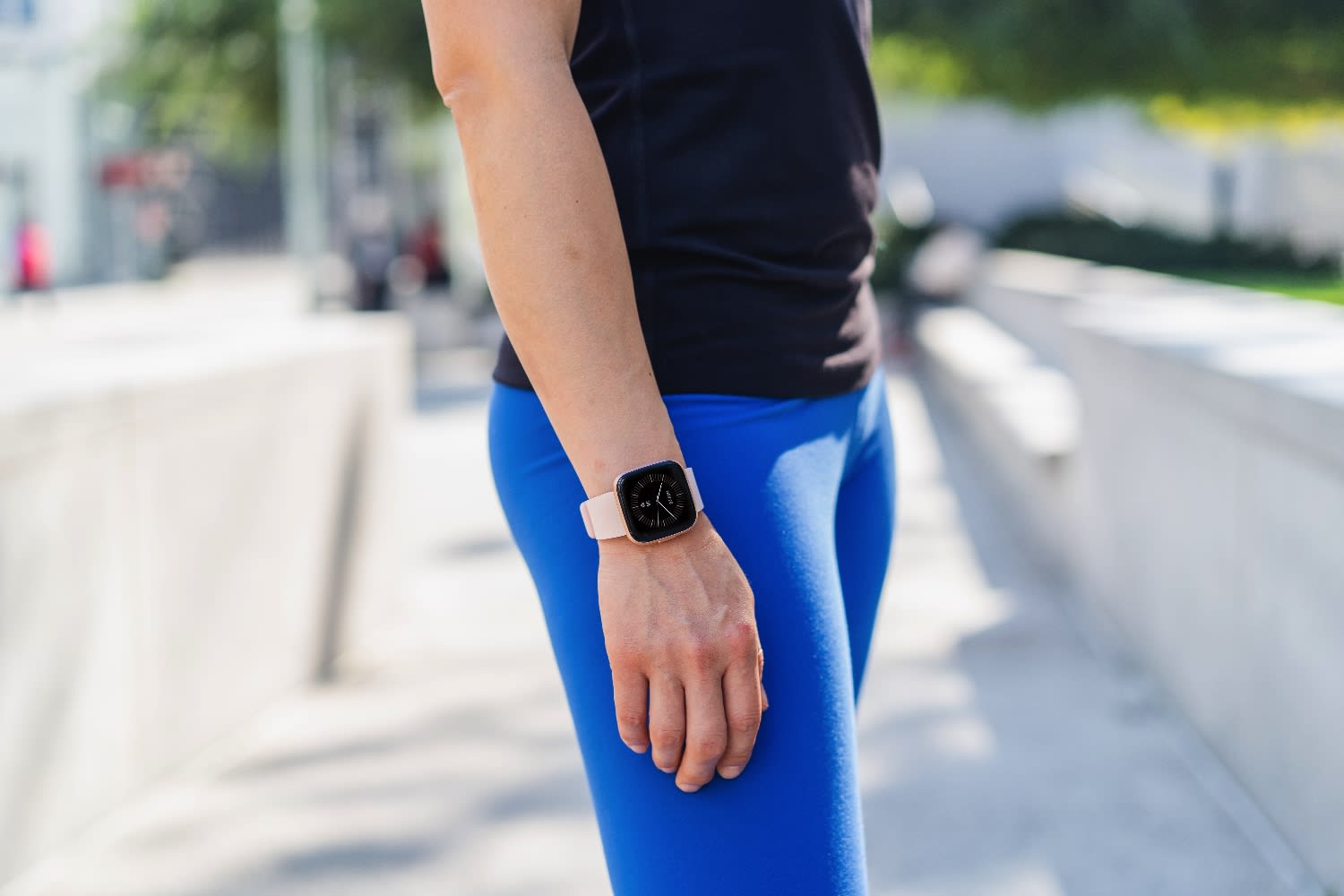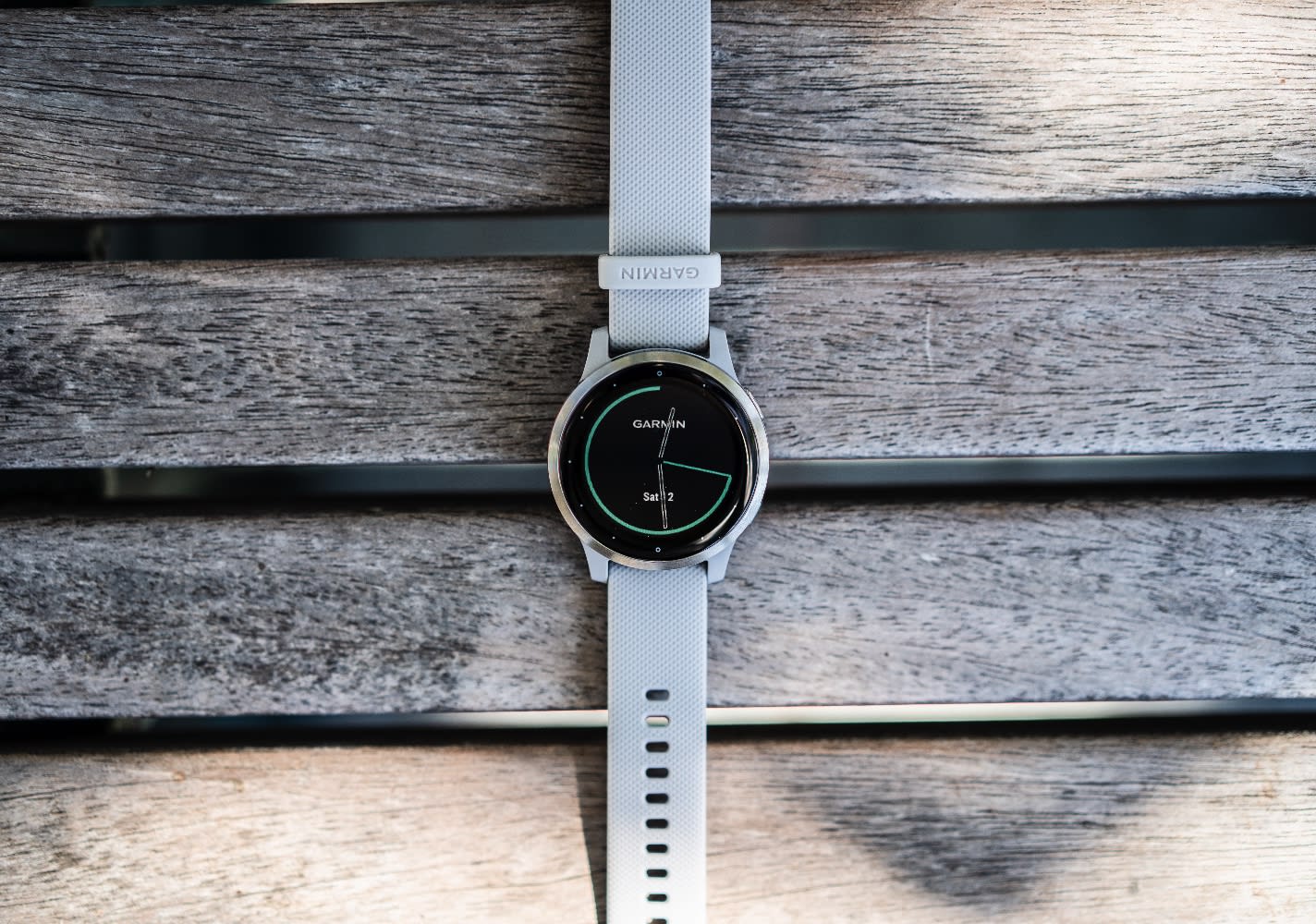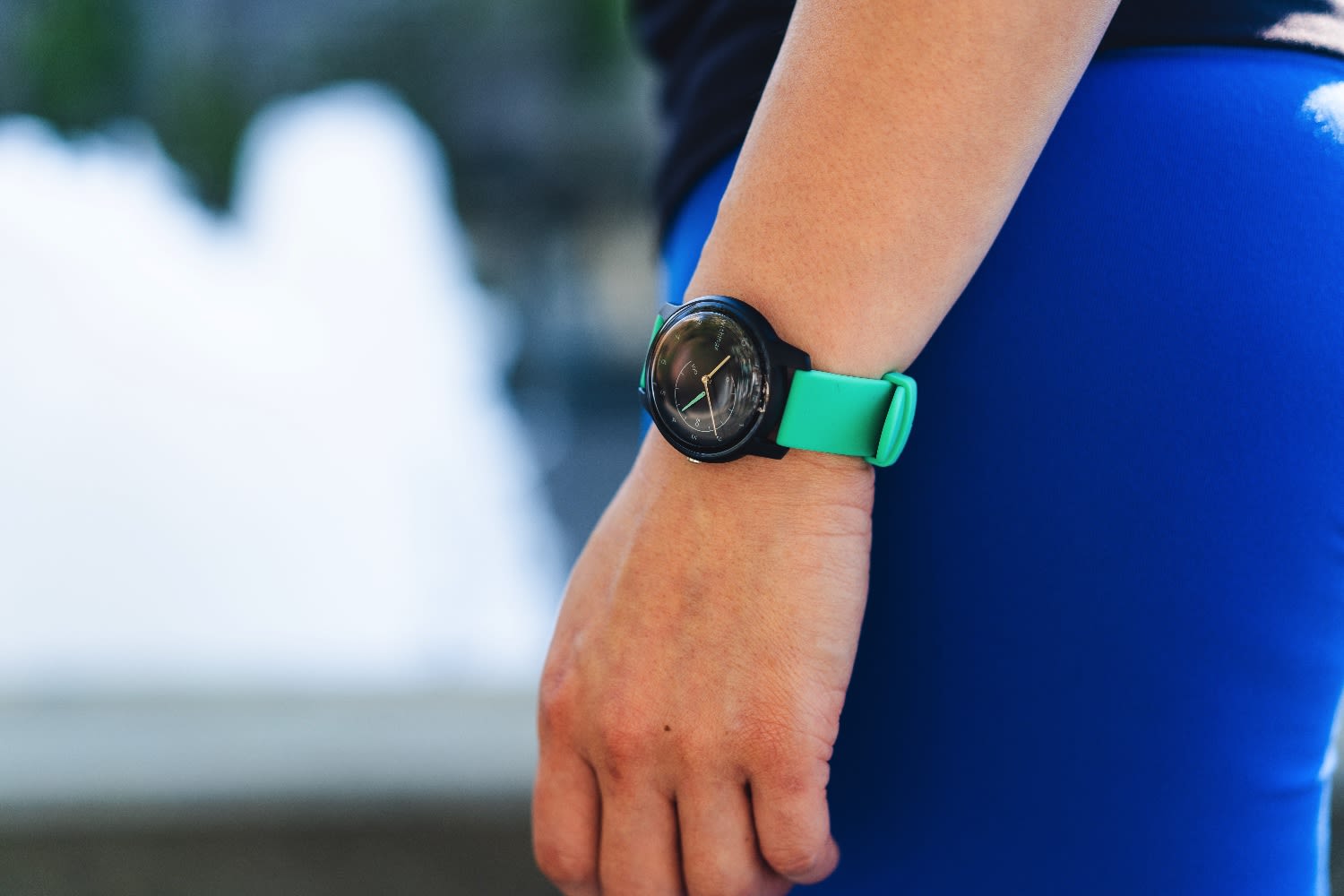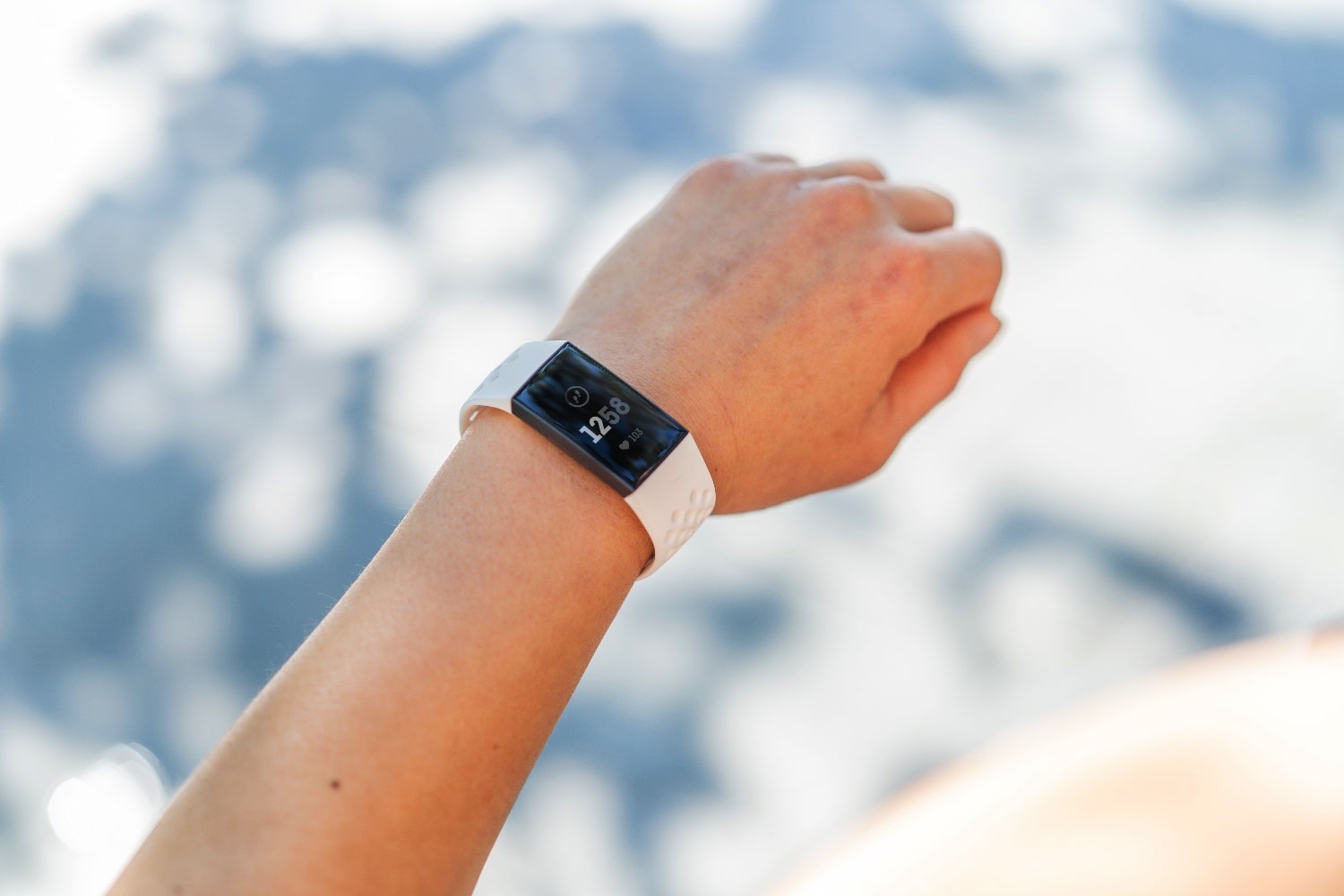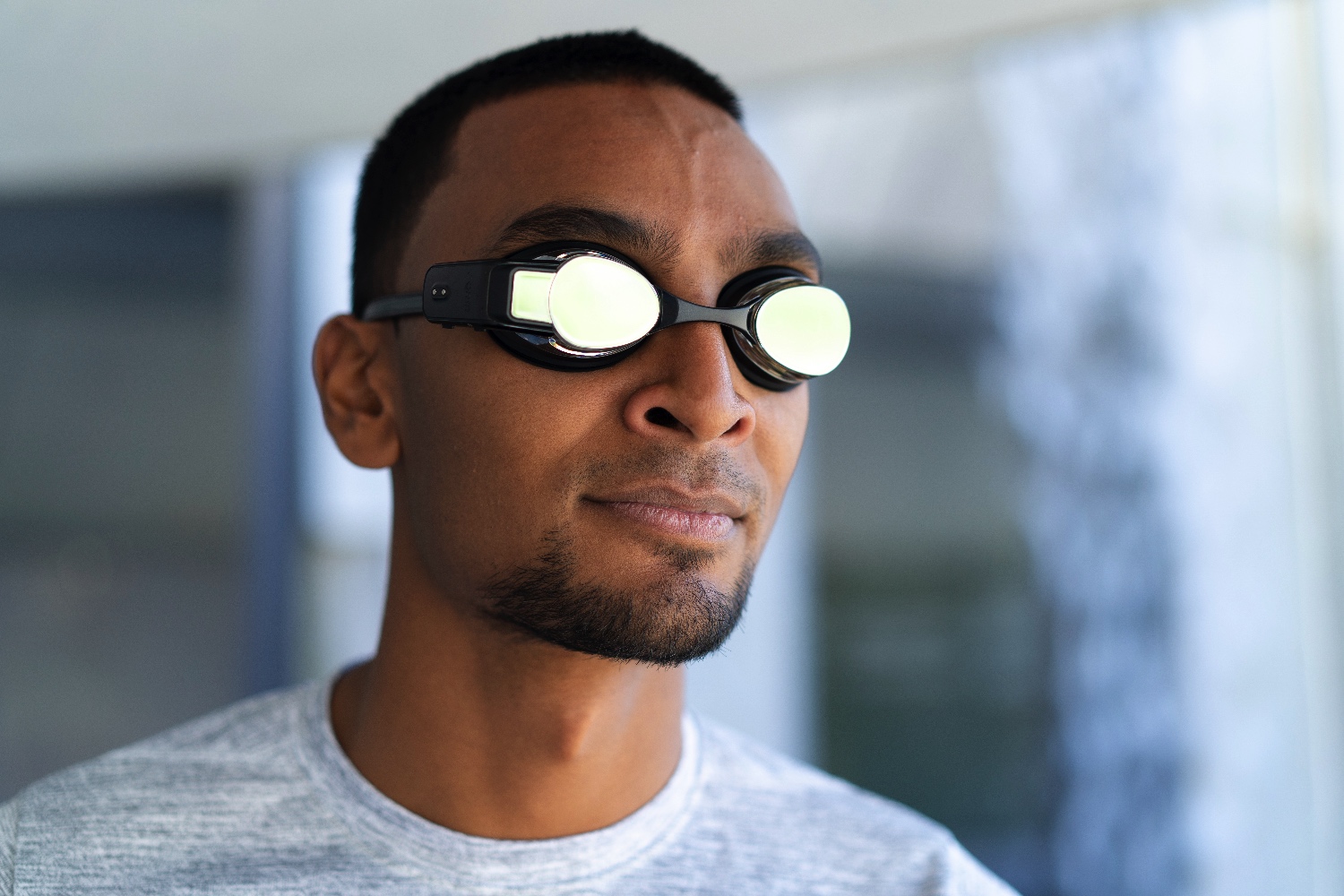If you’re an endurance athlete
You’re serious about fitness, and you go to the gym as many times as your exercise regimen will allow. You’re all about shaving precious seconds from your splits and squeezing out those marginal gains. And it’s likely that you’re always preparing for a race, marathon, Ironman, Tough Mudder, triathlon or something equally strenuous.
You’ll need a device with a large, clear display that you can check without breaking your stride. It needs well-sized buttons surrounding the dial that, again, you don’t need to think twice before pushing. And it’ll need a capacious battery, especially if you’re using GPS to track your runs for hours at a time.
The watch will also need to be tough, capable of withstanding the rough and tumble nature of outdoor exercise. We recommend a device with an IP rating of 68, which should promise reliability in the face of dirt, water and mud.
IP ratings, explained
Ingress Protection (IP) ratings are a guide to how much dirt and water your watch should withstand. The IP code is normally two digits, with the first telling you how much dust or any solid particle it can withstand. The second number represents how much liquid you can safely expose the watch to.
For a watch to be used in all conditions, you’ll need a device with a particle rating of 5 or 6, depending on budget. The former denotes a device that may allow dust to enter, but not in sufficient quantities to stop it from working. The latter, meanwhile, has been tested to resist a jet of dust in harsh testing conditions and should be vacuum-tight.
In this category, you’re going to need a watch that’s waterproof, rather than one that is merely water-resistant. The minimum rating you should look for is 7, which covers submersion in water as deep as one meter for up to 30 minutes. If you’re a casual pool swimmer or fancy runs in a light drizzle, this is likely to be sufficient.
Otherwise, go for a rating of 8, which covers submersion in water at depths greater than one meter for 30 minutes. That said, it’s worth noting that watches in this class are often even sturdier than companies feel comfortable claiming. You could expect a watch like this to survive pool diving at depths of up to 50 meters (5ATM), but beyond that, you’ll need a specialty device.
For a watch that does all of these things you will, of course, be paying a premium. And it may not be the device you wear throughout the day, either. Most options stand out in a formal environment, and the device may be too big to sit comfortably under a shirt sleeve, for what that’s worth.
Our pick is the Garmin Forerunner 945 ($602). It’s built for multi-sport athletes, with a triathlon mode that lets you effortlessly switch between swimming, biking and running modes. In addition, the watch has a dedicated mode for open-water swimming and has a Pulse Ox sensor to measure your blood oxygen levels — a key indicator of how healthy you are.
It also has a number of features that make it tempting to wear full time, including Garmin Pay. It works just like any other contactless payments provider, so you add your card to your watch and tap to pay for items. However, it has far less support among banks compared to Apple Pay and other big-name payment networks, so it’s worth checking if your provider supports it. Rounding out the list, you can download full-color maps to your wrist and pull up to 1,000 songs from your Spotify account to be stored locally.
Polar’s Vantage V ($580) is a strong alternative. It’s a little cheaper but will also do the job for triathletes. It features an always-on, color touchscreen and five chunky pushers, with a promised battery life of 40 hours with GPS and wrist-worn heart rate tracking. Additionally, it’s waterproof up to 50 meters, and Polar says it meets the military’s 810G spec for durability.
An honorable mention goes to Garmin’s Forerunner 645 Music, a cheaper alternative to the class-leading 945. The cheaper device doesn’t have a dedicated triathlon mode, full-color mapping, body battery scores or the ability to read your body’s pulse oximetry. But if you’re looking for a cheaper option and won’t be toughing those mudders, this could fit the bill.
If you’re wellness-minded
You care about staying healthy, but maybe you’re not at the gym every day and twice on weekends. You go for a run on the weekend, and take a class or two during the week, but it’s not something that defines your life. Perhaps you want reminders to stay hydrated or to stay mindful during stressful days. You want to feel good and be fitter, but that’s not going to stop you from eating something delicious (and unhealthy) at the end of a long day.
You want a watch that can be used as a daily driver and in the gym, but it can’t just look like your typical utilitarian running watch. Swappable bands and a clean, uncluttered design go a long way to making sure it’s fashionable, comfortable and versatile. Because you’re going to be doing a variety of activities, pre-programmed workouts specific to classes can be useful. That can be used both to track an activity, like yoga, or to offer on-screen coaching through a series of pre-prepared instructions. And, naturally, having a tally of your day’s activity is important to give you a good idea of how active you’ve been.
In terms of durability, an IP67-rated device that can be used in mild rain and the pool should offer plenty of protection. GPS is both costly and weighs heavy on your battery, so you can probably do without it on your watch. If you need to track a route, you can do so easily by taking your phone along for a run.
An optical heart rate sensor is useful to have, especially if you’re looking to improve your resting heart rate. They can alert you to cardiac incidents and even help you calm down with breathing exercises during periods of stress. Battery life of more than a day is a key factor, here, since you’ll want to use the device for sleep tracking, and having the watch wake you up with a silent alarm is handy. Another useful addition, at least for half the population, is menstrual cycle tracking.
Our pick is the Fitbit Versa 2 ($200), which offers much of what you could ask for in a watch of this class. It ships with Amazon Alexa’s voice assistant, so you can use your voice to set alarms, find nearby locations and control your smart home. For that price you get a device that will track your activity, as well as store music locally for when you’re out and about.
Another plus point is Fitbit’s track record with long battery life, especially compared to, say, the Apple Watch. You can expect to get just under a week of use, so long as you don’t activate the always-on display. The watch also has stress tracking and breath coaching, as well as, in the words of one colleague, “surprisingly accurate” period tracking. Fitbit’s hardware is relatively easy to use, but be warned that its Bluetooth connection can be a little fussy.
An alternative option is Garmin’s VivoActive 4s ($350). It’s a lot more expensive than the Versa 2, but has built-in GPS. It features a round rather than squared-off design, and splits the difference between a serious running watch and a fitness tracker. You’ll receive more performance-focused metrics, compared to the lifestyle-focused Fitbit, plus smarter running coaching. You’ll also get offline music, pre-loaded activity tracking, sleep tracking and the Garmin Pay, which is useful, though retail support is limited. Importantly, too, if you’re not using GPS, you’ll get up to a week of battery life.
If you’re mostly in the market for a smartwatch
There are plenty of people who just want a do-everything, go-anywhere timepiece to pair with their phones. You don’t want to compromise on your technical credentials for the benefit of getting a purpose-built fitness wearable. And it’s likely that you’re heavily invested in a phone and app ecosystem that you already use to get everything else done.
Our top choice is the Apple Watch Series 5 ($384), with its focus on being a “proactive health monitor” that observes your heart rate and breathing. Water-resistant to 5 ATM, the Watch 5 supports almost every sport you could possibly take up. And it has menstrual cycle tracking, stress coaching and an app to warn you if you’re being exposed to excessive ear-damaging noise. Naturally, too, it offers music playback, basic step and calorie tracking and even a built-in ECG test to catch possible cardiac arrhythmias.
The Apple Watch Series 3 ($189) offers some of the same features as the Series 5, but in a smaller, cheaper package. It, too, has optical heart-rate sensing and can automatically detect various kinds of workouts without your input. That includes everything from running to indoor rowing, all without you pushing a button. Sadly, all Apple Watches have two major flaws: no built-in sleep tracking and shorter battery life than the competition (roughly a day and a half).
Then there’s Samsung’s Galaxy Watch Active 2 ($300), which also bridges the worlds of fitness wearables and smartwatches. It offers workout tracking for walking, running, cycling, swimming, indoor rowing ergometer and elliptical machines. It also has heart-rate tracking, stress and activity monitoring, and an IP68 durability rating for durability, designed with underwater use in mind.
The watch’s OS, Samsung’s proprietary Tizen software, feels light and snappy, and is full of smart little touches. The system offers stress detection, sleep tracking and calorie monitoring — common features for a fitness watch. But, because it’s a smartwatch, it can also control compatible smart home devices, hail you a ride and even control PowerPoint presentations without the need for a third-party app. Unfortunately, though, like the Apple Watch, you can’t expect it to last more than two days on a charge.
If you’re on a budget
Most smart and fitness watches worth buying cost more than $150, and that’s not great if you’re on a budget. That said, you can still find a decent piece of kit for under $150. A standout choice is the Withings Move ($69+). It’s a hybrid watch with an analog face and a fitness tracker hidden under the hood. The only evidence that it’s a smarter watch is the subdial, which tells you how close to your activity goal you are each day. Pair it with Withings’ Health Mate app, and you’ll get plenty of insight into your daily steps and sleep.
For the price, you get a watch that can track more than 30 exercises, including running and swimming (it’s water-resistant to 5ATM), and you can pair it with your phone for aGPS while you’re out and about. There’s a vibrating alarm with smart wake technology, rousing you when you’re at the top of your sleep cycle.
If you’re looking for something a little smarter, consider the Fitbit Charge 3 ($140). It’s an activity-tracking band with a touchscreen that displays the time as well as notifications from your phone. An optical heart rate sensor monitors your ticker in real-time, and it’s also “swimproof” to 5ATM. Like other watches we’ve mentioned so far, it automatically detects various exercises.
On top of that, you also get sleep and menstruation tracking, mobile payments and stress and breathing coaching. It’s a little more retro-styled than other devices; it looks a lot more like a tracker you would have worn half a decade ago. But if you’re not prepared to spend more, this is one of the most feature-packed fitness wearables in its class.
If you’re into swimming
If all you do is swim, you may not want the burden of wearing a watch while you’re in the pool. After all, they may not be the most accurate, and some swimmers find watches to be a little distracting if they’re focusing on aerodynamics. Form’s eponymous goggles ($199) remove both gripes by putting the fitness tracker inside a pair of otherwise normal-looking goggles.
There’s a waveguide display inside one of the eyecups, too, which relays your split times when you’re swimming. All of that data goes to the app, which gives you detailed breakdowns of your laps, as well as letting you compete with your swimmer friends.
If you’re a soccer player
It’s not just professionals who can wear those body-tracking vests you see used in training sessions at elite clubs. Catapult’s Playr soccer wearable ($200) is a dinky GPS tracker that monitors your position, speed and movement during a game. The device itself sits in the vest and can be removed and recharged, and because soccer is an all-weather game, the device is sturdy.
When you’ve finished playing, you can download the data to your phone to see your heat map, statistics and how well you did. It’ll tell you where you’re falling short of your best and offer ways to improve as well with a built-in coach that advises you on game prep, recovery and nutrition based on your stats. And no, your teammates don’t need to use them at the same time, although it might help them improve, too.
Images: Brett Putman for Engadget (except PlayerTek press images)
In this article:
apple, best fitness watch, best fitness wearable, best wearable, fitbit, garmin, gear, health2019, medicine, samsung, video, wearables
All products recommended by Engadget are selected by our editorial team, independent of our parent company. Some of our stories include affiliate links. If you buy something through one of these links, we may earn an affiliate commission.

Comments

69
Shares



